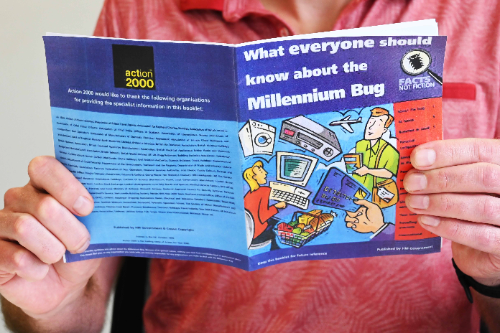Fears over the access to information post Y2K
“There is no room for complacency. Finish sorting out your systems. Think about how you can best ensure the continuity of essential services. If we work in partnership, we can make sure the transition to the year 2000 is remembered not for major disruptions, but for its unique celebrations.”
Former Prime Minister Tony Blair, speaking to business leaders, January 1999.
As the world approached the Millennium, fears began to rise that computer systems would not cope with the change of century. Catastrophe was forecast, with talk of planes dropping from the skies, power stations shutting down and banking systems collapsing.

When computer systems had been set up in the 1950s and 1960s, two digits represented the year. All software treated years as occurring in the 20th century. The year 2000 would therefore be 00 and systems would interpret that as 1900.
In the lead-up to the new millennium, countries collaborated worldwide, devising workarounds and upgrading computer systems. And when the clock ticked over to 01/01/2000, there was very little disruption. Sceptics argued the bug had never been a threat. Experts countered, saying the work ensured disaster was averted.
Almost everyone knew about the Y2K bug and the threat of erasing records and major infrastructure malfunction. It brought to the forefront our ever-increasing reliance on computers to store and manage data for our daily lives.